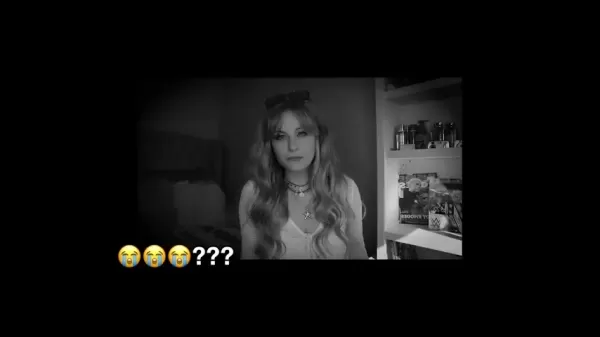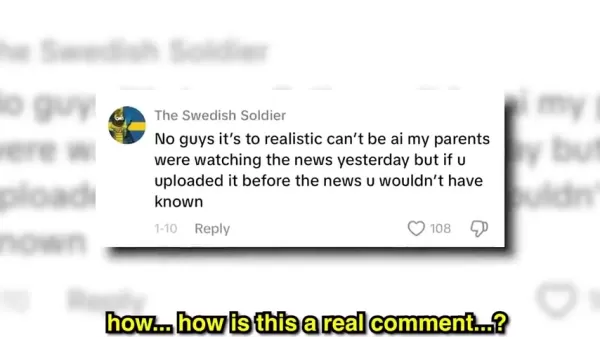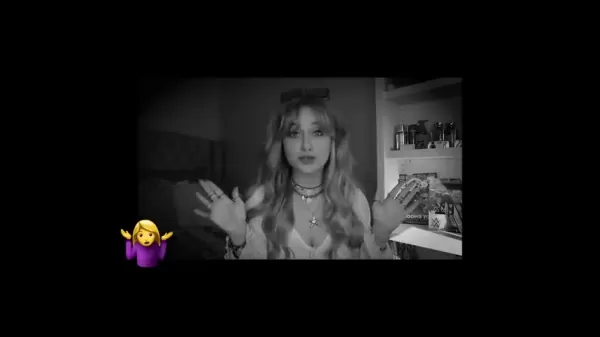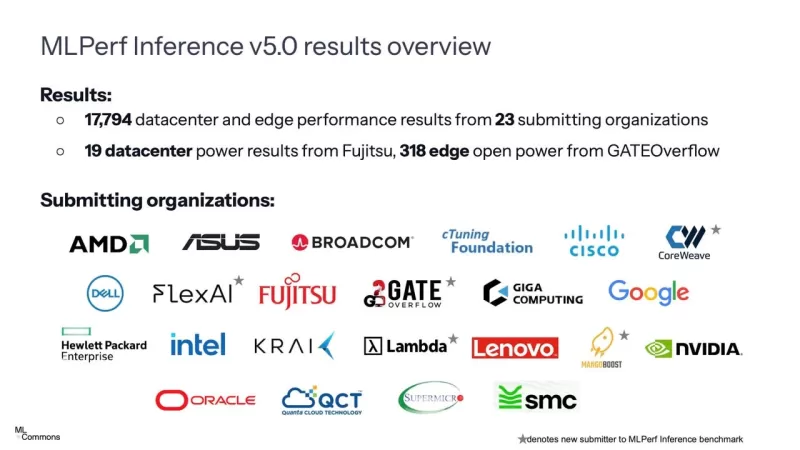Gen Z's Reality Check: AI Fakery & Critical Thinking
In today's fast-paced digital world, Generation Z, having grown up with the internet at their fingertips, faces unique challenges. The rise of AI-generated content, which can be hard to distinguish from reality, has led to a worrying increase in misinformation and a dip in critical thinking abilities. This article explores the current situation of Gen Z, the risks posed by AI-generated fakery, and the urgent need for enhanced media literacy and fact-checking. It challenges the notion that this digitally native generation is naturally tech-savvy and examines the broader societal implications.
Key Points
- Gen Z is increasingly vulnerable to misinformation due to the ease of AI content creation.
- Fact-checking and critical thinking are essential for navigating the digital age.
- AI-generated content makes it harder to tell fact from fiction.
- Social media algorithms can spread misinformation and create echo chambers.
- A lack of digital literacy can have real-world consequences, impacting decision-making and societal understanding.
The Rise of AI Fakery and Gen Z
The New Boom of Generative AI
The accessibility and sophistication of AI tools have made it easier than ever to create realistic but fake content. From manipulated images to fabricated news stories, AI is making misinformation more widespread. This is particularly problematic for Gen Z, who are often the main consumers of online content. It's not that they're less intelligent; it's just that the sheer volume and speed of information, combined with advanced AI, make traditional methods of discerning truth less effective.

AI-driven misinformation can take various forms, including:
- Deepfake videos: Realistic but fabricated videos of people saying or doing things they never did.
- AI-generated articles: News stories written by AI that can be indistinguishable from human-written content, spreading false information.
- Manipulated images: Images altered using AI to create misleading or entirely fabricated scenarios.
- Social media bots: Automated accounts that spread misinformation and amplify biased viewpoints.
In this era, where AI-generated information is everywhere, it's crucial to be more vigilant and scrutinize the information we encounter online.
The Illusion of Digital Savvy
There's a common belief that because Gen Z grew up with the internet, they're naturally equipped to navigate it critically. While they might be adept at using social media and technology, this doesn't necessarily translate to critical thinking or the ability to distinguish fact from fiction.

Many are unaware of the techniques used to spread misinformation and the subtle signs of manipulated content. Relying solely on social media algorithms to curate their news feeds only worsens the problem, creating echo chambers where they're only exposed to information that confirms their existing biases. The sheer volume of information Gen Z deals with daily encourages them to use shortcuts in understanding the world, often at the expense of accuracy.
Here are some fact-checking steps:
- Cross-reference information from multiple sources.
- Look for evidence of bias or manipulation.
- Check the author's credibility and expertise.
- Consult fact-checking websites and organizations.
By using these simple fact-checking techniques, you can avoid falling for disinformation campaigns.
A Case Study: The Hollywood Sign 'Burning' Hoax
A Billie Eilish fan page on Instagram posted a video of the Hollywood sign 'burning' during California fires. Nearly six hundred thousand people liked this AI-generated video and believed the iconic sign was actually burning. Los Angeles residents had to post images of the sign untouched on TikTok to dispel the hoax. Similarly, during severe wildfires in California, an AI-generated image of the Santa Monica Pier on fire circulated widely, causing unnecessary panic.

These examples highlight the power of AI to create convincing fake images and videos and how easily they can spread across social media, influencing public perception and behavior. It's up to individuals to do their own due diligence when encountering disinformation.
Contributing factors include:
- Lack of fact-checking: Many Gen Z individuals readily accept information shared on social media without verifying its accuracy.
- Visual influence: AI-generated images and videos are highly persuasive, making it difficult to discern their authenticity.
- Emotional manipulation: Misinformation often plays on emotions, making it more likely to be shared without critical analysis.
Not doing your due diligence when encountering disinformation can be harmful.
The Cost of Ignorance for Social Media
Erosion of Trust and Political Polarization
The spread of misinformation undermines trust in legitimate sources of information and fuels political polarization. When people can't distinguish between fact and fiction, they're more susceptible to extreme views and conspiracy theories. This can have serious consequences for democratic processes and social cohesion. For instance, the rise of fake news during elections has been shown to influence voter behavior and undermine faith in the electoral system. In a world where truth is relative, finding common ground and building consensus becomes nearly impossible.
It's not just about a lack of knowledge of the truth; it's also about the following that can come with it:
- Conspiracy groups
- Political division
- Racial divisiveness
- Destructive behavior
It's crucial that we combat these issues and prevent those with destructive agendas from reaching this impressionable audience.
Decline in Critical Thinking and Analytical Skills
Constant exposure to readily available information reduces the need for critical thinking and analytical skills. Gen Z is used to receiving information in bite-sized, easily digestible formats, which doesn't encourage in-depth analysis or evaluation. This can have long-term effects on their ability to solve problems, make informed decisions, and engage in productive discourse. An inability to assess the validity of information makes them vulnerable to manipulation and unable to contribute meaningfully to complex discussions. In a world that increasingly demands nuanced understanding, this decline in critical thinking puts them at a disadvantage.

The fact that the Billie Eilish post had comments like "wait a damn minute" shows the problem that people don't want to think for themselves, eroding the need to learn about what has historical landmark stature and significance.
Here are some key points to consider:
- Does the fact that it's easily available to me mean that I shouldn't try to apply myself?
- Do I think before acting?
- Is the information provided well-sourced and of quality?
- Should I try to fact-check before acting?
The Era of ‘Trust Me’ Journalism is Over
Another TikTok by Sophie showed the burning pier and broke people's hearts because many content creators have made memories there. We can avoid these problems by being a little more willing to put in the effort to do good work. We have a role in this world to help guide young people on how to do this, and this is where being a leader in your household is important. The era of just going with the word is over. Every person needs to ask why, or how that item made its way into the world. It takes a bit more effort, but ultimately, it will be worth it to preserve integrity.
Empowering Gen Z: A Call to Action for Media Literacy
Educational Initiatives in Critical Thinking
A robust media literacy education is essential to equip Gen Z with the skills to navigate the digital landscape effectively. This includes teaching them how to evaluate sources, identify bias, and recognize manipulated content. Schools and educational institutions must incorporate these skills into their curriculum, making them a core component of digital literacy. Furthermore, community-based programs and online resources can provide additional support and guidance for individuals of all ages. Critical thinking is not only a skill but a mindset that fosters skepticism and encourages individuals to question everything they encounter.
Educational initiatives should cover:
- Source evaluation techniques
- Understanding bias and perspective
- Recognizing manipulated images and videos
- Discerning accurate headlines from false or clickbait
Promoting Fact-Checking and Verification
Fact-checking should be a routine practice for all social media users, especially Gen Z. Encouraging them to cross-reference information from multiple sources and consult fact-checking websites before sharing content can help curb the spread of misinformation. Platforms can also play a role by providing tools and resources that enable users to easily verify the accuracy of claims. The culture of verification must be ingrained from an early age, empowering individuals to take responsibility for the information they consume and disseminate. A generation of informed, discerning users is a powerful safeguard against the insidious effects of misinformation.

She points out one comment from the clip to prove her point. Just because the sun is out, doesn't mean it is winter. You should be able to identify the time and location, if that applies.
Countering Digital Distraction
The design of social media platforms often prioritizes engagement over accuracy, leading to a constant barrage of notifications, alerts, and sensational content. Gen Z must learn to manage these distractions and prioritize focused attention on critical analysis. This involves developing strategies to limit screen time, cultivate mindfulness, and engage in deeper forms of learning. By breaking free from the cycle of digital distraction, they can cultivate the mental space needed to engage with information critically and avoid being swept away by fleeting trends and sensational claims. That comment also said, "If you can't figure out what 1+1 is, you might struggle to know what comes after the letter C."
Gen Z & Generative AI: Strengths and Weaknesses
Pros
- Tech-savviness: Gen Z's familiarity with technology allows them to quickly learn new AI tools.
- Creativity: AI can augment creativity by providing new ways to generate content and ideas.
- Efficiency: AI tools can automate repetitive tasks and improve productivity.
- Access to information: AI can democratize access to knowledge and resources.
Cons
- Susceptibility to misinformation: The ease of AI content generation makes it harder to discern fact from fiction.
- Decline in critical thinking: Reliance on AI can reduce the need for analytical skills.
- Erosion of trust: Misinformation can erode trust in legitimate sources and promote political polarization.
- Algorithmic bias: AI algorithms can perpetuate bias and amplify societal inequalities.
Frequently Asked Questions
What is Gen Z and what are their defining characteristics?
Gen Z, also known as Zoomers, refers to the generation born between 1997 and 2012. They are characterized as being digitally native, socially conscious, and highly connected. They value authenticity, diversity, and inclusivity, and are often skeptical of traditional institutions.
What are some of the primary sources that I can use to verify my information?
While Wikipedia can be helpful as a starting point, sources from official, non-bias government or university sources can be highly effective. Doing due diligence on your information and asking the right questions can save you from making poor decisions due to disinformation.
How can media literacy education be integrated into existing educational systems?
Media literacy can be integrated across different subjects, from language arts to social studies. Teachers can use real-world examples of misinformation to illustrate the importance of critical thinking. They can also assign projects that require students to evaluate sources, analyze bias, and create their own media content.
Related Questions
How is Generative AI making an impact?
Generative AI is already impacting numerous fields, including art, writing, music, and product design. The use of AI in art has raised questions about what the role of AI is in creative fields. While AI may never fully replace human creativity, generative AI can help to assist creators. Here is what it is like: Gen Z does not know the communication tower that is usually on the side of the Hollywood sign. When the woman in the video went over her current music interests, it was what we would call "basic." The person didn't make an argument to the commenter about winter; it was basically just to say it's summer or winter time in California. It's a common occurrence to see the sun out in this area of the world.
Why do some people say that not everything should be convenient?
The discussion around convenience often revolves around the potential trade-offs between making things easier and maintaining skills, knowledge, and critical thinking. There's a view that things should not always be automated, so that we still try to improve human skill sets in certain areas.
Related article
 Gen Z's Reality Check: AI Fakery & Critical Thinking
In today's fast-paced digital world, Generation Z, having grown up with the internet at their fingertips, faces unique challenges. The rise of AI-generated content, which can be ha
Gen Z's Reality Check: AI Fakery & Critical Thinking
In today's fast-paced digital world, Generation Z, having grown up with the internet at their fingertips, faces unique challenges. The rise of AI-generated content, which can be ha
 Alex Hormozi Reveals Secrets to Cold Email Success in Lead Generation
If you're eager to boost your client acquisition strategy, mastering cold emailing could be your game-changer. Yet, many businesses find it challenging to reap substantial benefits from their cold email campaigns. In this guide, we'll dive into actionable tips inspired by experts like Alex Hormozi t
Alex Hormozi Reveals Secrets to Cold Email Success in Lead Generation
If you're eager to boost your client acquisition strategy, mastering cold emailing could be your game-changer. Yet, many businesses find it challenging to reap substantial benefits from their cold email campaigns. In this guide, we'll dive into actionable tips inspired by experts like Alex Hormozi t
 Nvidia Dominates Gen AI Benchmarks, Outperforming Two Rival AI Chips
Nvidia's general-purpose GPU chips have once again dominated one of the most widely recognized benchmarks for assessing chip performance in artificial intelligence, this time focusing on generative AI applications such as large language models (LLMs). The competition was relatively one-sided.Systems
Comments (7)
0/200
Nvidia Dominates Gen AI Benchmarks, Outperforming Two Rival AI Chips
Nvidia's general-purpose GPU chips have once again dominated one of the most widely recognized benchmarks for assessing chip performance in artificial intelligence, this time focusing on generative AI applications such as large language models (LLMs). The competition was relatively one-sided.Systems
Comments (7)
0/200
![SamuelJackson]() SamuelJackson
SamuelJackson
 August 22, 2025 at 3:01:25 PM EDT
August 22, 2025 at 3:01:25 PM EDT
AI fakery is wild! Gen Z's got it tough—swimming in deepfakes and half-truths. Gotta sharpen those critical thinking skills or we're all doomed to believe everything. 🧠


 0
0
![RichardGonzález]() RichardGonzález
RichardGonzález
 July 22, 2025 at 3:35:51 AM EDT
July 22, 2025 at 3:35:51 AM EDT
This article really hits home! Gen Z's drowning in AI fakes, and it's wild how hard it is to spot them. Makes me wonder if we're losing our grip on what's real. 🧠 Need to up our critical thinking game ASAP!


 0
0
![JamesLopez]() JamesLopez
JamesLopez
 May 27, 2025 at 9:59:49 PM EDT
May 27, 2025 at 9:59:49 PM EDT
Wow, this article hits hard! 😮 Gen Z’s stuck navigating a sea of AI fakes—kinda scary how real they look. Gotta sharpen those critical thinking skills!


 0
0
![JuanAdams]() JuanAdams
JuanAdams
 May 27, 2025 at 8:19:43 AM EDT
May 27, 2025 at 8:19:43 AM EDT
Intéressant ! L’IA qui imite la réalité, c’est flippant. Les jeunes doivent vraiment muscler leur esprit critique pour ne pas se faire avoir. 😕


 0
0
In today's fast-paced digital world, Generation Z, having grown up with the internet at their fingertips, faces unique challenges. The rise of AI-generated content, which can be hard to distinguish from reality, has led to a worrying increase in misinformation and a dip in critical thinking abilities. This article explores the current situation of Gen Z, the risks posed by AI-generated fakery, and the urgent need for enhanced media literacy and fact-checking. It challenges the notion that this digitally native generation is naturally tech-savvy and examines the broader societal implications.
Key Points
- Gen Z is increasingly vulnerable to misinformation due to the ease of AI content creation.
- Fact-checking and critical thinking are essential for navigating the digital age.
- AI-generated content makes it harder to tell fact from fiction.
- Social media algorithms can spread misinformation and create echo chambers.
- A lack of digital literacy can have real-world consequences, impacting decision-making and societal understanding.
The Rise of AI Fakery and Gen Z
The New Boom of Generative AI
The accessibility and sophistication of AI tools have made it easier than ever to create realistic but fake content. From manipulated images to fabricated news stories, AI is making misinformation more widespread. This is particularly problematic for Gen Z, who are often the main consumers of online content. It's not that they're less intelligent; it's just that the sheer volume and speed of information, combined with advanced AI, make traditional methods of discerning truth less effective.

AI-driven misinformation can take various forms, including:
- Deepfake videos: Realistic but fabricated videos of people saying or doing things they never did.
- AI-generated articles: News stories written by AI that can be indistinguishable from human-written content, spreading false information.
- Manipulated images: Images altered using AI to create misleading or entirely fabricated scenarios.
- Social media bots: Automated accounts that spread misinformation and amplify biased viewpoints.
In this era, where AI-generated information is everywhere, it's crucial to be more vigilant and scrutinize the information we encounter online.
The Illusion of Digital Savvy
There's a common belief that because Gen Z grew up with the internet, they're naturally equipped to navigate it critically. While they might be adept at using social media and technology, this doesn't necessarily translate to critical thinking or the ability to distinguish fact from fiction.

Many are unaware of the techniques used to spread misinformation and the subtle signs of manipulated content. Relying solely on social media algorithms to curate their news feeds only worsens the problem, creating echo chambers where they're only exposed to information that confirms their existing biases. The sheer volume of information Gen Z deals with daily encourages them to use shortcuts in understanding the world, often at the expense of accuracy.
Here are some fact-checking steps:
- Cross-reference information from multiple sources.
- Look for evidence of bias or manipulation.
- Check the author's credibility and expertise.
- Consult fact-checking websites and organizations.
By using these simple fact-checking techniques, you can avoid falling for disinformation campaigns.
A Case Study: The Hollywood Sign 'Burning' Hoax
A Billie Eilish fan page on Instagram posted a video of the Hollywood sign 'burning' during California fires. Nearly six hundred thousand people liked this AI-generated video and believed the iconic sign was actually burning. Los Angeles residents had to post images of the sign untouched on TikTok to dispel the hoax. Similarly, during severe wildfires in California, an AI-generated image of the Santa Monica Pier on fire circulated widely, causing unnecessary panic.

These examples highlight the power of AI to create convincing fake images and videos and how easily they can spread across social media, influencing public perception and behavior. It's up to individuals to do their own due diligence when encountering disinformation.
Contributing factors include:
- Lack of fact-checking: Many Gen Z individuals readily accept information shared on social media without verifying its accuracy.
- Visual influence: AI-generated images and videos are highly persuasive, making it difficult to discern their authenticity.
- Emotional manipulation: Misinformation often plays on emotions, making it more likely to be shared without critical analysis.
Not doing your due diligence when encountering disinformation can be harmful.
The Cost of Ignorance for Social Media
Erosion of Trust and Political Polarization
The spread of misinformation undermines trust in legitimate sources of information and fuels political polarization. When people can't distinguish between fact and fiction, they're more susceptible to extreme views and conspiracy theories. This can have serious consequences for democratic processes and social cohesion. For instance, the rise of fake news during elections has been shown to influence voter behavior and undermine faith in the electoral system. In a world where truth is relative, finding common ground and building consensus becomes nearly impossible.
It's not just about a lack of knowledge of the truth; it's also about the following that can come with it:
- Conspiracy groups
- Political division
- Racial divisiveness
- Destructive behavior
It's crucial that we combat these issues and prevent those with destructive agendas from reaching this impressionable audience.
Decline in Critical Thinking and Analytical Skills
Constant exposure to readily available information reduces the need for critical thinking and analytical skills. Gen Z is used to receiving information in bite-sized, easily digestible formats, which doesn't encourage in-depth analysis or evaluation. This can have long-term effects on their ability to solve problems, make informed decisions, and engage in productive discourse. An inability to assess the validity of information makes them vulnerable to manipulation and unable to contribute meaningfully to complex discussions. In a world that increasingly demands nuanced understanding, this decline in critical thinking puts them at a disadvantage.

The fact that the Billie Eilish post had comments like "wait a damn minute" shows the problem that people don't want to think for themselves, eroding the need to learn about what has historical landmark stature and significance.
Here are some key points to consider:
- Does the fact that it's easily available to me mean that I shouldn't try to apply myself?
- Do I think before acting?
- Is the information provided well-sourced and of quality?
- Should I try to fact-check before acting?
The Era of ‘Trust Me’ Journalism is Over
Another TikTok by Sophie showed the burning pier and broke people's hearts because many content creators have made memories there. We can avoid these problems by being a little more willing to put in the effort to do good work. We have a role in this world to help guide young people on how to do this, and this is where being a leader in your household is important. The era of just going with the word is over. Every person needs to ask why, or how that item made its way into the world. It takes a bit more effort, but ultimately, it will be worth it to preserve integrity.
Empowering Gen Z: A Call to Action for Media Literacy
Educational Initiatives in Critical Thinking
A robust media literacy education is essential to equip Gen Z with the skills to navigate the digital landscape effectively. This includes teaching them how to evaluate sources, identify bias, and recognize manipulated content. Schools and educational institutions must incorporate these skills into their curriculum, making them a core component of digital literacy. Furthermore, community-based programs and online resources can provide additional support and guidance for individuals of all ages. Critical thinking is not only a skill but a mindset that fosters skepticism and encourages individuals to question everything they encounter.
Educational initiatives should cover:
- Source evaluation techniques
- Understanding bias and perspective
- Recognizing manipulated images and videos
- Discerning accurate headlines from false or clickbait
Promoting Fact-Checking and Verification
Fact-checking should be a routine practice for all social media users, especially Gen Z. Encouraging them to cross-reference information from multiple sources and consult fact-checking websites before sharing content can help curb the spread of misinformation. Platforms can also play a role by providing tools and resources that enable users to easily verify the accuracy of claims. The culture of verification must be ingrained from an early age, empowering individuals to take responsibility for the information they consume and disseminate. A generation of informed, discerning users is a powerful safeguard against the insidious effects of misinformation.

She points out one comment from the clip to prove her point. Just because the sun is out, doesn't mean it is winter. You should be able to identify the time and location, if that applies.
Countering Digital Distraction
The design of social media platforms often prioritizes engagement over accuracy, leading to a constant barrage of notifications, alerts, and sensational content. Gen Z must learn to manage these distractions and prioritize focused attention on critical analysis. This involves developing strategies to limit screen time, cultivate mindfulness, and engage in deeper forms of learning. By breaking free from the cycle of digital distraction, they can cultivate the mental space needed to engage with information critically and avoid being swept away by fleeting trends and sensational claims. That comment also said, "If you can't figure out what 1+1 is, you might struggle to know what comes after the letter C."
Gen Z & Generative AI: Strengths and Weaknesses
Pros
- Tech-savviness: Gen Z's familiarity with technology allows them to quickly learn new AI tools.
- Creativity: AI can augment creativity by providing new ways to generate content and ideas.
- Efficiency: AI tools can automate repetitive tasks and improve productivity.
- Access to information: AI can democratize access to knowledge and resources.
Cons
- Susceptibility to misinformation: The ease of AI content generation makes it harder to discern fact from fiction.
- Decline in critical thinking: Reliance on AI can reduce the need for analytical skills.
- Erosion of trust: Misinformation can erode trust in legitimate sources and promote political polarization.
- Algorithmic bias: AI algorithms can perpetuate bias and amplify societal inequalities.
Frequently Asked Questions
What is Gen Z and what are their defining characteristics?
Gen Z, also known as Zoomers, refers to the generation born between 1997 and 2012. They are characterized as being digitally native, socially conscious, and highly connected. They value authenticity, diversity, and inclusivity, and are often skeptical of traditional institutions.
What are some of the primary sources that I can use to verify my information?
While Wikipedia can be helpful as a starting point, sources from official, non-bias government or university sources can be highly effective. Doing due diligence on your information and asking the right questions can save you from making poor decisions due to disinformation.
How can media literacy education be integrated into existing educational systems?
Media literacy can be integrated across different subjects, from language arts to social studies. Teachers can use real-world examples of misinformation to illustrate the importance of critical thinking. They can also assign projects that require students to evaluate sources, analyze bias, and create their own media content.
Related Questions
How is Generative AI making an impact?
Generative AI is already impacting numerous fields, including art, writing, music, and product design. The use of AI in art has raised questions about what the role of AI is in creative fields. While AI may never fully replace human creativity, generative AI can help to assist creators. Here is what it is like: Gen Z does not know the communication tower that is usually on the side of the Hollywood sign. When the woman in the video went over her current music interests, it was what we would call "basic." The person didn't make an argument to the commenter about winter; it was basically just to say it's summer or winter time in California. It's a common occurrence to see the sun out in this area of the world.
Why do some people say that not everything should be convenient?
The discussion around convenience often revolves around the potential trade-offs between making things easier and maintaining skills, knowledge, and critical thinking. There's a view that things should not always be automated, so that we still try to improve human skill sets in certain areas.
 Gen Z's Reality Check: AI Fakery & Critical Thinking
In today's fast-paced digital world, Generation Z, having grown up with the internet at their fingertips, faces unique challenges. The rise of AI-generated content, which can be ha
Gen Z's Reality Check: AI Fakery & Critical Thinking
In today's fast-paced digital world, Generation Z, having grown up with the internet at their fingertips, faces unique challenges. The rise of AI-generated content, which can be ha
 Alex Hormozi Reveals Secrets to Cold Email Success in Lead Generation
If you're eager to boost your client acquisition strategy, mastering cold emailing could be your game-changer. Yet, many businesses find it challenging to reap substantial benefits from their cold email campaigns. In this guide, we'll dive into actionable tips inspired by experts like Alex Hormozi t
Alex Hormozi Reveals Secrets to Cold Email Success in Lead Generation
If you're eager to boost your client acquisition strategy, mastering cold emailing could be your game-changer. Yet, many businesses find it challenging to reap substantial benefits from their cold email campaigns. In this guide, we'll dive into actionable tips inspired by experts like Alex Hormozi t
 Nvidia Dominates Gen AI Benchmarks, Outperforming Two Rival AI Chips
Nvidia's general-purpose GPU chips have once again dominated one of the most widely recognized benchmarks for assessing chip performance in artificial intelligence, this time focusing on generative AI applications such as large language models (LLMs). The competition was relatively one-sided.Systems
Nvidia Dominates Gen AI Benchmarks, Outperforming Two Rival AI Chips
Nvidia's general-purpose GPU chips have once again dominated one of the most widely recognized benchmarks for assessing chip performance in artificial intelligence, this time focusing on generative AI applications such as large language models (LLMs). The competition was relatively one-sided.Systems
 August 22, 2025 at 3:01:25 PM EDT
August 22, 2025 at 3:01:25 PM EDT
AI fakery is wild! Gen Z's got it tough—swimming in deepfakes and half-truths. Gotta sharpen those critical thinking skills or we're all doomed to believe everything. 🧠


 0
0
 July 22, 2025 at 3:35:51 AM EDT
July 22, 2025 at 3:35:51 AM EDT
This article really hits home! Gen Z's drowning in AI fakes, and it's wild how hard it is to spot them. Makes me wonder if we're losing our grip on what's real. 🧠 Need to up our critical thinking game ASAP!


 0
0
 May 27, 2025 at 9:59:49 PM EDT
May 27, 2025 at 9:59:49 PM EDT
Wow, this article hits hard! 😮 Gen Z’s stuck navigating a sea of AI fakes—kinda scary how real they look. Gotta sharpen those critical thinking skills!


 0
0
 May 27, 2025 at 8:19:43 AM EDT
May 27, 2025 at 8:19:43 AM EDT
Intéressant ! L’IA qui imite la réalité, c’est flippant. Les jeunes doivent vraiment muscler leur esprit critique pour ne pas se faire avoir. 😕


 0
0





























